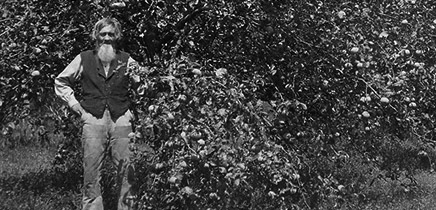The Minnesota River provides the southern border of Carver County, separating it from Scott County. In the valley that is named after it, the river was a key part of early settlement in Carver County.
The Minnesota River was created thousands of years ago. Geologists have traced the source of its creation to the great glaciers that once covered all of what is now modern-day Minnesota, the last of which melted approximately eleven thousand years ago. To this day, the Minnesota River crosses the state from west to east, for a combined distance of 332 miles, entirely within the Minnesota state borders. The river starts at Big Stone Lake on the South Dakota border, and connects with the Mississippi River at Mendota.
The Minnesota River played a pivotal role in settlement of the Carver Country area. Long before the arrival of white, settlers, the Minnesota River Valley was populated by indigenous tribes, the most notable being the Dakota. In 1766, famed explorer Jonathan Carver traveled up the Minnesota River (then called the St. Pierre). Eventually, Carver reached a small stream that branched off from the river, which he named ‘Carver’s Creek’, after his own discovery of it. With the Minnesota River to support it, the village of Carver was started just east of Carver’s Creek. Another location on the Minnesota River that helped play a role in early settlement is the site of Carver Rapids. It was along these rapids that Jean-Baptiste Faribault established a trading post around 1804. Thanks to this post, and others, the Minnesota River became the site of an extensive fur trade operation until 1851.
Through the 1800s, the Minnesota River Valley remained a desired destination for settlers, particularly after the ratification of the Treaty of Traverse des Sioux in 1853. It was during this era of settlement that Carver was incorporated from a small village to a township in 1857. Another settlement that emerged in the river valley was Chaska, whose origins go back to 1851 and, incorporated as a village in 1871. Others include Shakopee, whose origins go back to Faribault’s fur trading operations along the river; and Chanhassen.
As the twentieth century started, the various towns in the Minnesota River Valley continued to expand and change with the times. Amidst these times of change, the river continued to serve as a key landmark, and an important part of each town. In 1965, the worst flood in Minnesota history happened. Caused by rapid melting of snow and ice left by a particularly harsh winter, the Minnesota and Mississippi Rivers overflowed their banks. This overflow flooded many towns and cities in both river valleys, including the lower part of old Carver. Following the disaster of this flood, the people of Carver County worked to raise the Carver dike, to help contain the Minnesota River. In 1969, another wet spring resulted in yet another devastating flood in the Minnesota River Valley, followed by a third in 1993.
In 1976, the Minnesota Valley Wildlife Refuge was established, with the goal of providing a habitat for a wide range of waterfowl, fish and other species threatened by commercial and industrial development. The refuge center also provides Twin Cities’ residents with a source of environmental education and wildlife recreation. To this day, the Minnesota River continues to serve Carver County as a key natural landmark, geographical boundary, and recreational destination.
AV-81-6790
Hartley, Lucie K, The Carver Story. Carver, MN: 1993.
Chaska: A Minnesota River City. Chaska, MN: 1951
http://www.fws.gov/refuge/Minnesota_Valley/visit/plan_your_visit.html
Lofstrom, Ted and Lynne VanBrocklin Spaeth. Carver County: A Guide to Its Historic and Prehistoric Places. St. Paul: Minnesota Historical Society Press, 1978.


